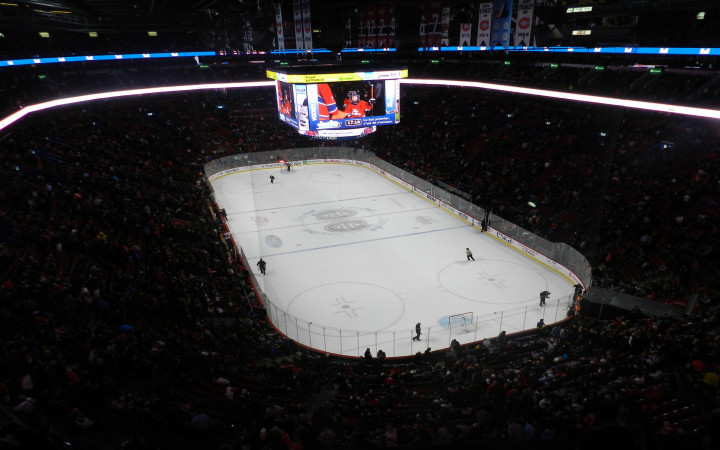Today’s Wonder of the Day was inspired by lucas. lucas Wonders, “how do they change a basketball stadium to a ice rank” Thanks for WONDERing with us, lucas!
Have you ever been to Los Angeles? If you have and you're a sports fan, there's one place you may have had the chance to visit: the Staples Center. In addition to hosting concerts and all sorts of special events, the Staples Center is also home to three professional sports franchises: the Los Angeles Lakers basketball team, the Los Angeles Clippers basketball team, and the Los Angeles Kings ice hockey team.
Back in May 2012, the Staples Center was an exciting place to be. All three teams made the playoffs, requiring the arena to host six playoff games in just four days. The Staples Center had to change from a Kings ice hockey rink to a Lakers basketball court to a Clippers basketball court and back over the course of less than a week.
Thanks to the modern technology that exists in today's sports arenas, the crews that man the Staples Center were able to transition between basketball courts and ice hockey rinks quickly. In fact, these transitions occur all over the country, since many cities have arenas that host both professional basketball and ice hockey teams.
If you think it sounds like a lot of work to convert an ice hockey rink to a basketball court and back again, you're right. Depending upon the technology used and the workforce available, the transition can take dozens of workers as few as 90 minutes or just a few workers an entire day to complete.
If a crew had to create a new ice hockey rink for each game, the process would be much more complicated. What many people don't realize, however, is that once an ice hockey rink is created at the start of the season, it stays in place until the season and playoffs are over.
The layer of ice on an ice hockey rink is only about an inch thick. However, it is created out of many tiny layers of ice to make sure the ice is strong and durable. It remains frozen throughout the season thanks to a calcium-chloride solution (called brinewater) that is cooled and circulated in the layer of concrete that forms the base of the ice layer.
When it's time to convert an ice hockey rink to a basketball court, the walls and glass panels around the rink are removed. Then large pieces of insulated plywood are laid out over the top of the ice. Finally the basketball court is pieced together like a puzzle on top of the plywood. The special plywood keeps the ice cool and the court warm. After the game, the process is reversed to get the arena ready for the next ice hockey game.
So when the basketball players are out there slam dunking the basketball through the hoop, the court they're running on still has the ice hockey rink beneath it. Don't worry about the basketball court sliding on the ice, though. It's heavy enough to stay in place on its own. For example, the basketball court the Denver Nuggets team plays on consists of 285 pieces that weigh 186 pounds each, which adds up to a court that weighs 26.5 tons!
The ice in an ice hockey rink is only removed when the regular season and playoffs are finished. When it's time to get rid of the ice, the brinewater is warmed and circulated under the ice to begin the melting process. Once the ice has melted sufficiently, it is then broken up and carted off by front end loaders.





